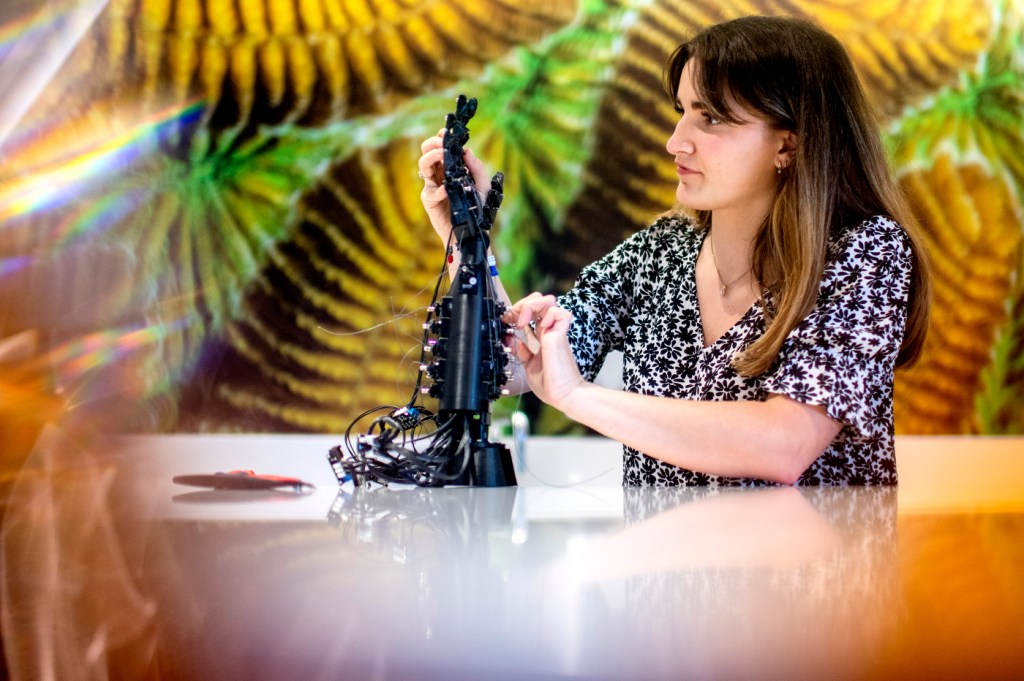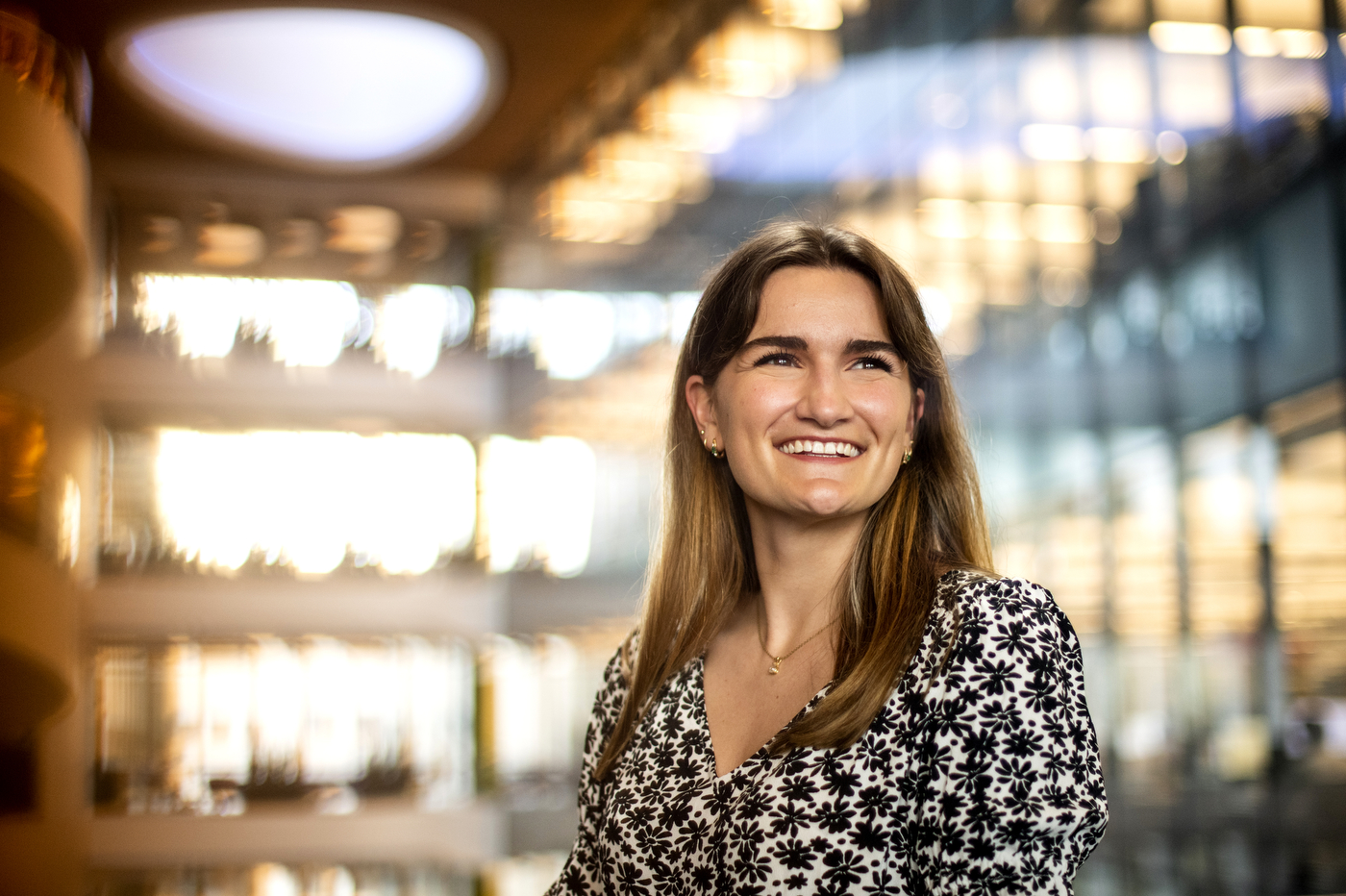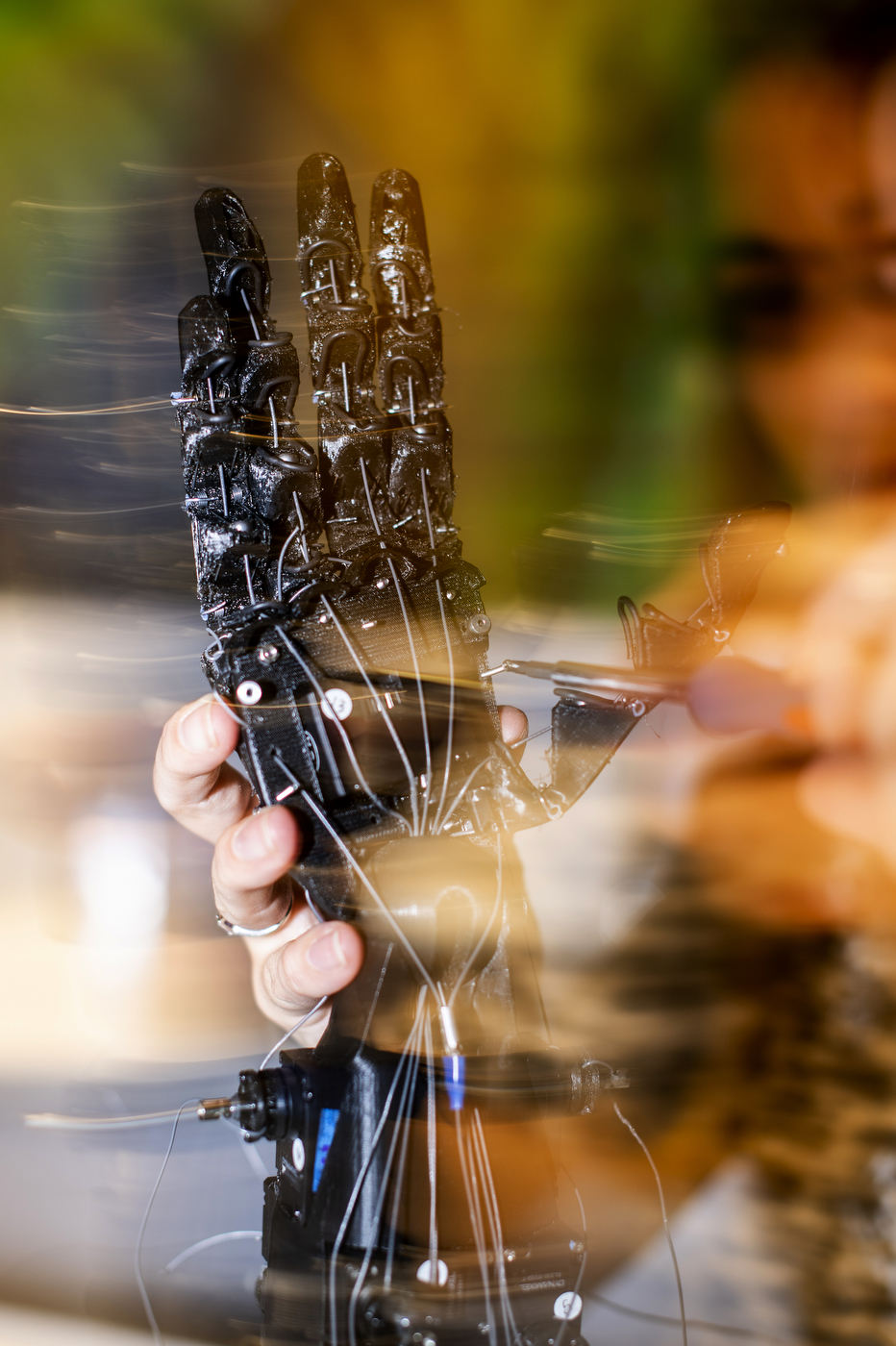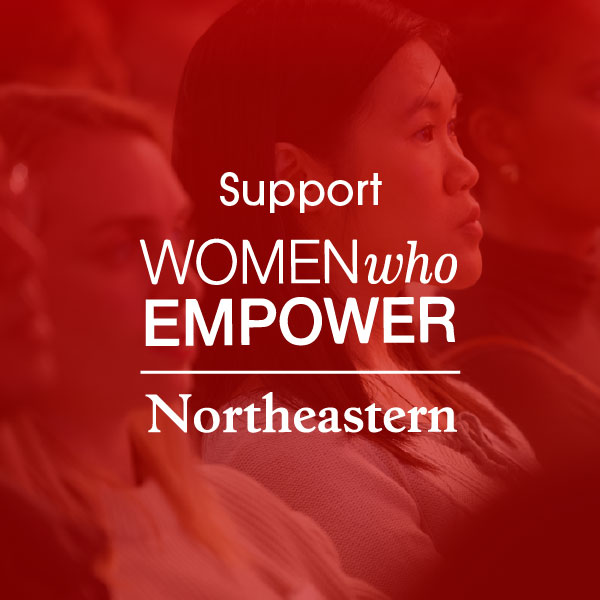Engineer with a passion for special needs communities develops a robotic signing arm for DeafBlind people

Samantha Johnson, bioengineer and founder of Tatum Robotics, vividly remembers meeting a DeafBlind person for the first time.
She was in her sophomore year at Northeastern University, taking an American Sign Language class, which required her to learn more about the local Deaf community by attending local Deaf events. At one of the events, she met a DeafBlind woman.
“I thought it was truly like magic how they could somehow understand [what was being communicated] purely into their hands,” Johnson says.
DeafBlind people communicate via tactile ASL with the help of a partner or an interpreter, holding onto their dominant hand while the interpreter signs. Signing with the woman, Johnson immediately thought of a robotic device that could sign for DeafBlind people. But she didn’t have the time or skills to develop such a device during her sophomore year, so she stored the idea away in her head.

Last month, however, Johnson, who is now 23 years old and a 2021 alumna of the College of Engineering with a combined bachelor’s and master’s degree in bioengineering, was announced to be the first place winner of the 2022 Innovator Awards given out by the Northeastern’s Women Who Empower platform in the young alumnae graduate category for developing a robotic arm that can sign in ASL.
The award came with a $22,000 cash prize that Johnson is planning to spend on further research and development, as well as on costs to hire DeafBlind consultants to help brainstorm ideas and evaluate prototypes.
Johnson grew up in Hudson in Central Massachusetts and describes herself as an optimistic person with high energy, who checks in on everyone and makes sure that everybody is happy.
“I really do see that we can accomplish anything we set our minds to,” Johnson says. “ I can work for 20 hours a day, especially if I see progress being made, I can keep going.”
Johnson started working with special needs students in middle school as a part of a conversation club that helped them practice making eye contact, asking questions and showing active listening.
In high school, Johnson was one of the first members to join a unified track and field team, where special needs athletes competed alongside abled partners. This experience allowed her to learn more about the impact of assistive technology, including wheelchairs and prosthetics, which gave students the abilities they otherwise wouldn’t have had, she says.
“I decided to do bioengineering with the assumption that I either will do prosthetics or assistive technology,” says Johnson, who still works as a life skills aide for adults with disabilities after work.
Johnson revived her idea of creating a communication device for DeafBlind people in her last year of college. In 2020, she was supposed to work on her thesis in a lab but all the labs closed due to COVID-19 pandemic along with the university. Instead, Johnson transitioned to working on the thesis at her small studio apartment.
She set up 3D-printers, bought soldering irons and started building a signing hand in collaboration with the Deaf-Blind Contact Center in Allston. She designed all of the parts herself, 3D-printed them, assembled them and started writing code. After the initial prototypes had been built, her father Todd Johnson, a software engineer, took over developing software for the hand to make it sign.
To ensure the device is the most effective, Johnson enlisted help from Northeastern’s Institute for Experiential Robotics and its director Taskin Padir; assistant professor in biology Jon Matthis and his motion capture software project FreeMoCap; associate professor in bioengineering and thesis advisor Chiara Bellini; and assistant professor in chemistry and chemical biology Mona Minkara. She also established collaboration with the New Dexterity group at the University of Auckland.

“Samantha employed a truly experiential approach to her project,” Padir says. “Rather than looking for an application for a technology, she identified an unmet need within the DeafBlind community and set course for her project to make an impact. This is the recipe for success.”
He also notes that Johnson is a true entrepreneur and go-getter, able to attract talent and motivate her team toward the goals of her project.
By the time Johnson graduated Northeastern, she had created a hand-wrist system that could fingerspell words texted to it from a computer. Johnson looked for jobs but none of the options involved working directly alongside disabled communities, which was important to her.
In a turn of fate, the Canadian National Institute for the Blind saw an article about Johnson’s work and offered her a small grant to continue working on a robotic arm. This allowed her to start her own company, Tatum Robotics, and move to a new space at MassRobotics, an innovation workspace in Seaport.
Tatum Robotics currently has one full-time employee, a linguist and fellow Northeastern alumna Nicole Rich, two graduate co-ops, and a large number of volunteers, Johnson says. Her father continues to be the lead software architect and her mother, Tammy Johnson, who is an accountant, helps manage the finances.
“We are hoping that once we get funding, we can bring on a few more employees, especially get more DeafBlind folks on staff,” Johnson says.
Since the thesis project grew into a real business, Johnson has formed collaborations with the Perkins School for the Blind, National Technical Institute for the Deaf and Helen Keller National Center. She brings in DeafBlind collaborators as frequently as possible to better understand tactile ASL and the needs of the community.
Tatum Robotics currently continues to work on a low-cost, anthropomorphic robotic hand that will fingerspell tactile sign language and a safe, compliant robotic arm so that the system can sign more complex words and phrases. They are creating a user interface and gesture recognition software with the help of some Northeastern clubs, so that DeafBlind people can respond back and have two-way communication all by themselves, similar to video relay services that sighted but Deaf, hard-of-hearing and speech-impaired individuals use in real-time via a sign language interpreter.
“We are bringing in native Deaf and DeafBlind signers to come in and sign so we can actually map their signing motions right to our robot,” Johnson says.
Brian Mansur, program director at the Deaf-Blind Contact Center, says he sees a lot of potential in the devices Johnson is working on. They would make things like reading newspapers and emails, going online, texting with a friend or even watching movies accessible to DeafBlind people.
“If you have somebody come in and try to sign into their hand all day, the task is too tremendous to get every bit of information,” Mansur says. “They can touch a robot wherever and whenever and get nuances and changes that are occurring in the language because the language is always evolving.”
DeafBlind people would become more employable with these communication devices, Mansur says.
He emphasizes how committed Johnson and Tatum Robotics are to the project.
“It is very impressive. I haven’t seen anybody that dedicated as of yet,” Mansur says.
Johnson has received positive feedback from other engineers and entrepreneurs, and they often suggest focusing on other bigger audiences or more lucrative markets, Johnson says.
“The technology itself is novel,” Johnson says. “What we are doing could do more than benefit DeafBlind people.”
But for now she prefers to focus on the DeafBlind community, which has been historically underserved, and, maybe, expand to other sectors later.
“We can really make such an impact on the lives of these people who currently don’t have any means of communicating. And this could be the first,” Johnson says.
For media inquiries, please contact media@northeastern.edu.







